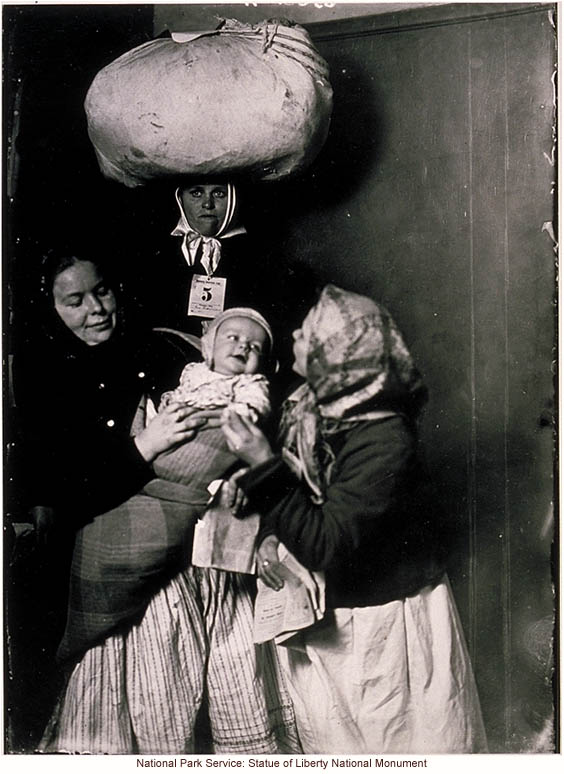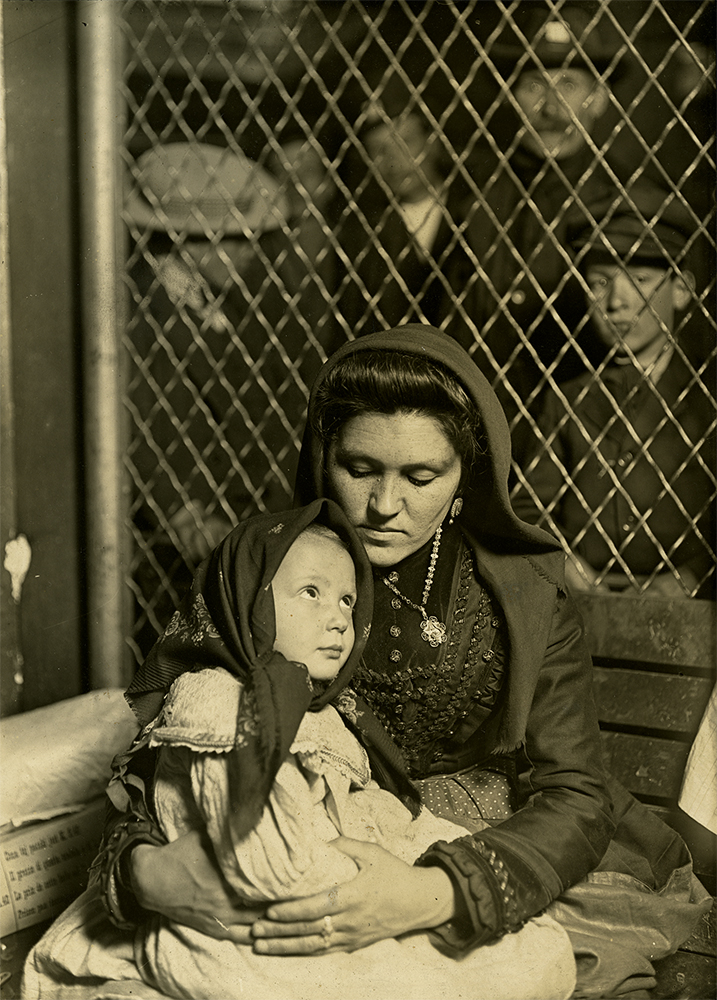
Italian Immigrant Women with a child. National Park Service, Statue of Liberty National Monument, Eastman, 1905.
Each woman who travelled to Connecticut went through Ellis Island. However, not all travelled to the rising state for economic opportunity. Many emigrated to join their long-lost lovers. Some wives emigrated with the intention to travel back to their hometown together with their husbands. Other women were forcibly sent to Connecticut to settle familial disputes. There were many cases in which a mother would send her daughter to Connecticut in order to forbid men from marrying her without her approval. Other cases involved fathers sending their daughters to live with relatives to uphold family honor. All with different reasons to take the difficult journey, Italian women voyaged across the Atlantic, changing their lives completely and the identity of their families.
